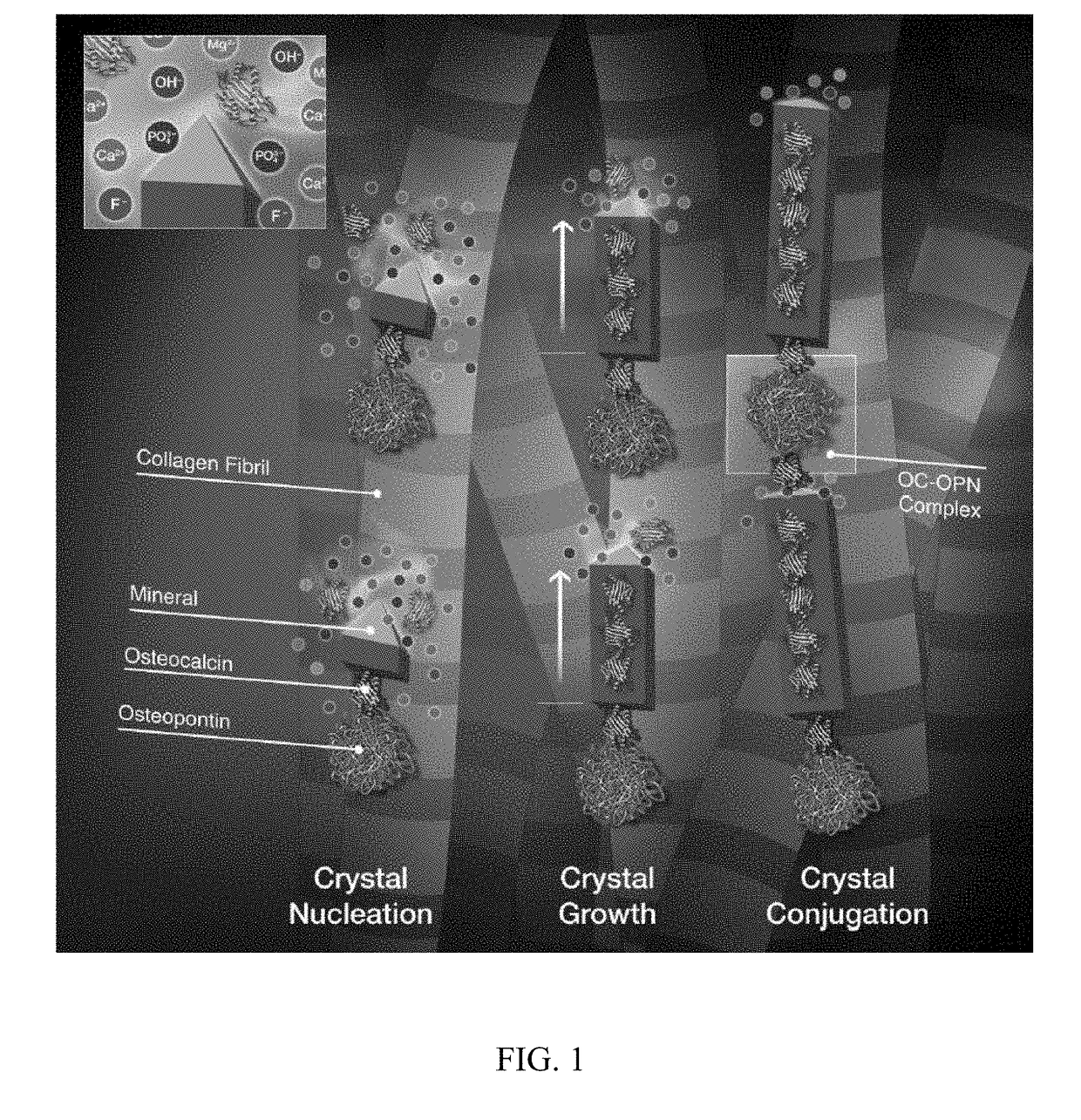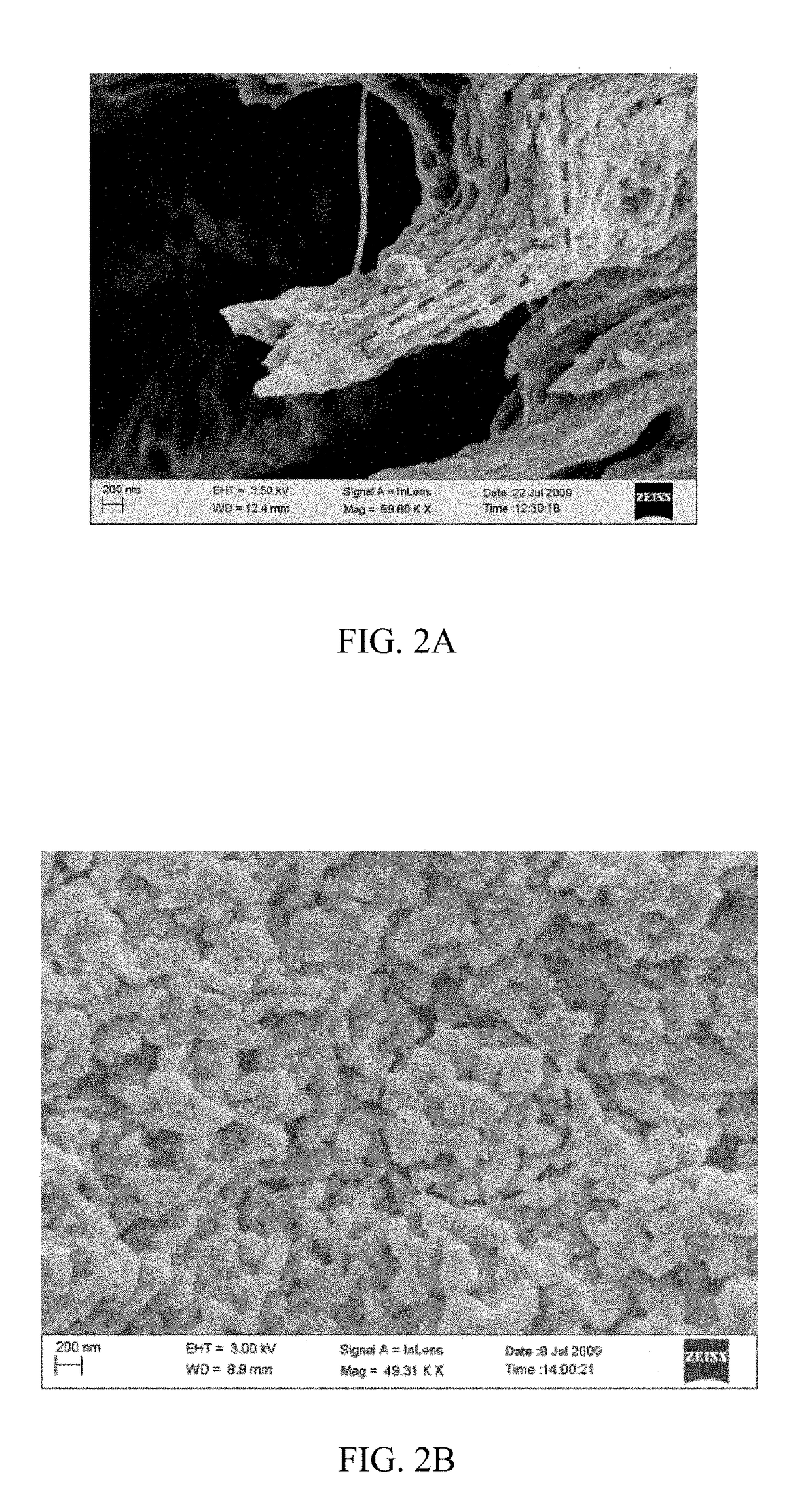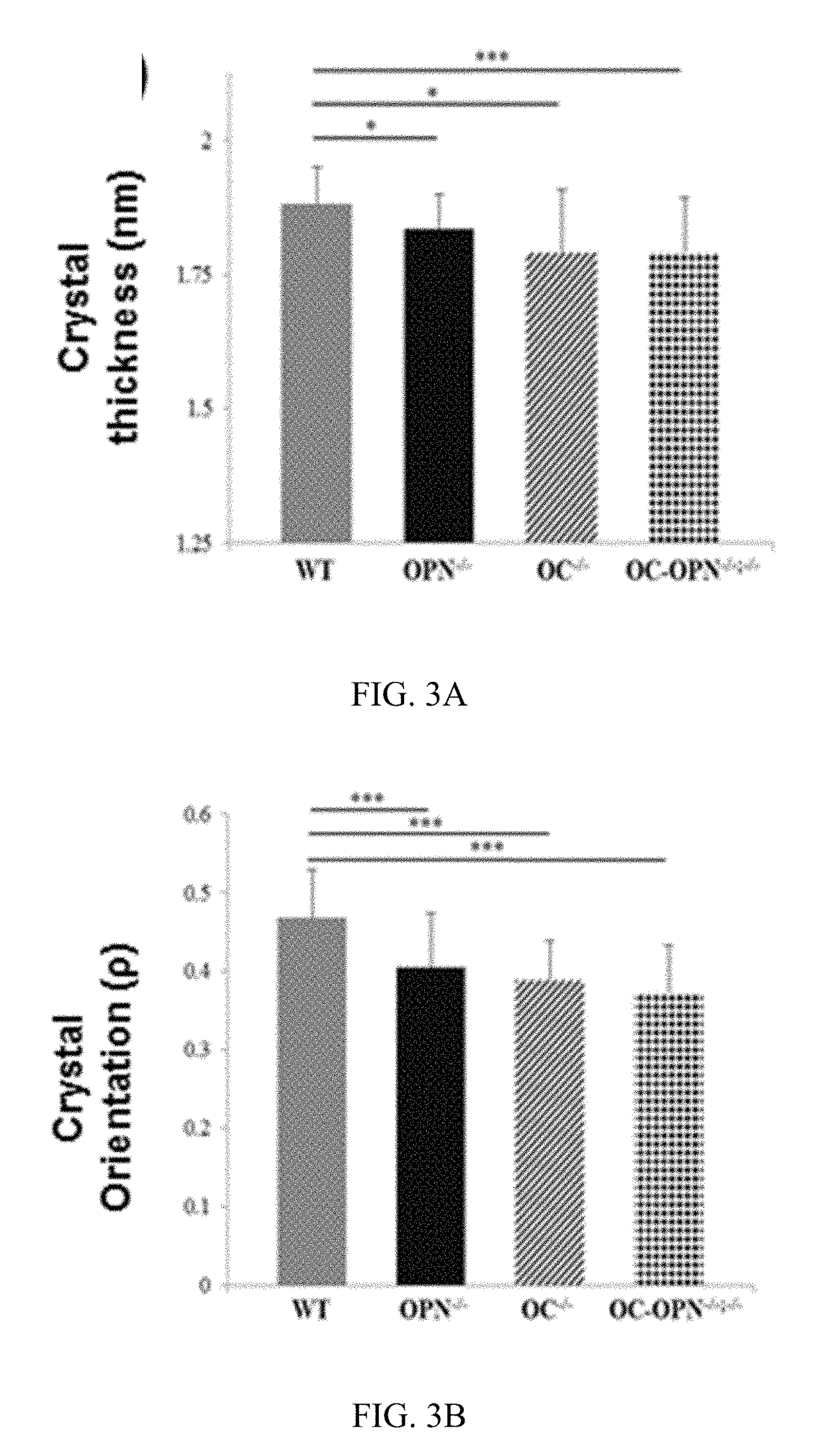Biomimetic nano-composite scaffold for enhanced bone healing and fracture repair
a biomimetic nano-composite and fracture repair technology, applied in the direction of prosthesis, bandages, dressings, etc., can solve the problems of limited amount of autograft that can be obtained, pain, infection, scarring, etc., and lack of bone growth-inducing factors necessary for efficacy
- Summary
- Abstract
- Description
- Claims
- Application Information
AI Technical Summary
Benefits of technology
Problems solved by technology
Method used
Image
Examples
examples
[0062]The following examples are intended to illustrate particular embodiments of the present invention, but in no way limit the scope of the present invention.
[0063]FIG. 5 is a diagrammatic representation of one, non-limiting example of a method for forming a tissue mineralization-promoting substance in accordance with the present invention, as explained in the following.
[0064]Bone mineral or hydroxyapatite (HA), may contain impurities within the crystal lattice. Impurities that exist as anions like carbonate, fluoride and chloride, substitute the hydroxyl or phosphate sites within the HA lattice. Cationic impurities such as trace elemental ions (for example, Mg2+, Na+, Zn2+, etc.), may substitute for calcium sites within the HA lattice. The presence of impurities may increase the solubility of HA and enhance bone formation. Additionally Mg and other trace elements may promote bone health. Magnesium, shown to be abundant in precursor elements of bone mineral during the mineralizati...
PUM
| Property | Measurement | Unit |
|---|---|---|
| Fraction | aaaaa | aaaaa |
| Fraction | aaaaa | aaaaa |
| Weight | aaaaa | aaaaa |
Abstract
Description
Claims
Application Information
 Login to View More
Login to View More - R&D
- Intellectual Property
- Life Sciences
- Materials
- Tech Scout
- Unparalleled Data Quality
- Higher Quality Content
- 60% Fewer Hallucinations
Browse by: Latest US Patents, China's latest patents, Technical Efficacy Thesaurus, Application Domain, Technology Topic, Popular Technical Reports.
© 2025 PatSnap. All rights reserved.Legal|Privacy policy|Modern Slavery Act Transparency Statement|Sitemap|About US| Contact US: help@patsnap.com



